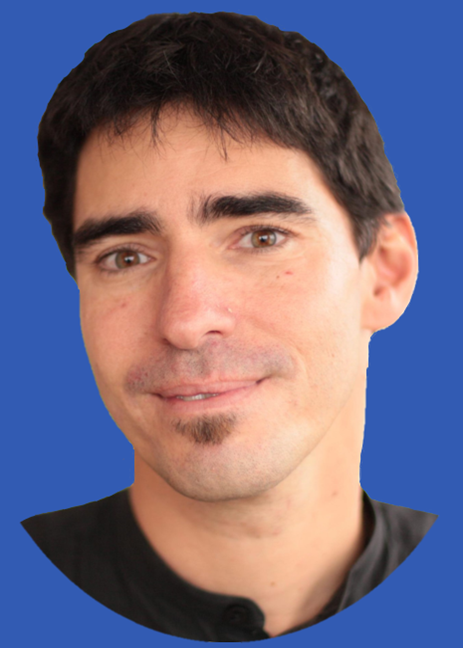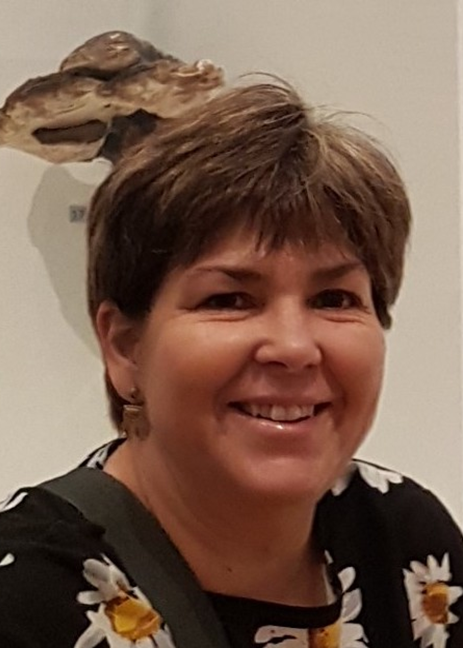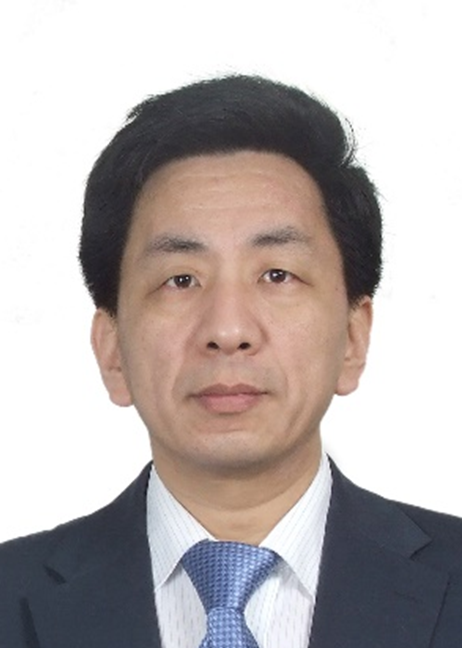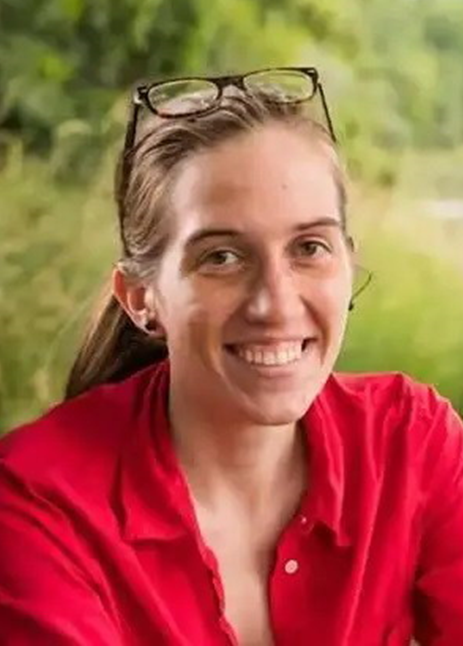Keynotes
 |
Prof. Thibault Datry
French National Research Institute for Agriculture, Food and the Environment, Lyon, France
Title of the Speech:
Intermittent rivers and ephemeral streams: a challenge for freshwater science
|
Personal Profile:
Thibault Datry is a freshwater scientist at INRAE (French National Research Institute for Agriculture, Food and the Environment) leading the EcoFlowS lab in Lyon, France. His research focuses on the ecology of rivers and hyporheic zones, with particular emphasis on intermittent rivers and ephemeral streams. His has passion for understanding the effects of natural and anthropogenic changes on community and ecosystem processes at multiple scales and translating it into tools and guidelines for water managers. He is developing international research programs at the global scale, while his primary study area primarily includes lotic and lentic ecosystems in France, New Zealand and Bolivia, where he has active collaborations and frequent visits. In the past 15 years, he has published >100 peer-reviewed papers related to stream and groundwater ecology and edited with two colleagues (and friends) the first book on the science and management of intermittent rivers and ephemeral stream.He serves on editorial boards of four international journals, organized two Special Issues and more than twenty Special Sessions on intermittent river ecology management at international conferences. He recently coordinated IRBAS (Intermittent River Biodiversity Analysis and Synthesis), an international research program exploring biodiversity patterns in intermittent rivers at the global scale, and the SMIRES (Science and Management of Intermittent Rivers and Ephemeral Streams) COST Action, a pluri-disciplinary European research program bringing together > 300 scientists from 31 European countries. He is now co-leading the 1000 Intermittent Rivers network and coordinating the DRYvER Horizon 2020 european project on the effects of climate change on drying river networks.
 |
Prof. Evelyn Habit Universidad de Concepción, Chile
Title of the Speech: |
Connectivity plays a crucial role in maintaining the structural and functional attributes of river networks and their biota. A proper understanding of the drivers affecting river connectivity, and thus, fish dynamics, requires consideration of both historical and contemporary processes. This information in turn provides evidence of how fish are likely to respond to future landscape changes. Results of researches using a multitemporal approach to examine the consequences of riverine connectivity alteration will be shown. In the past, events like the rise of the southern Andes and the Quaternary glacial cycles shaped riverine landscapes, influencing river connectivity, and affecting the phylogeographic and biogeographic patterns of its fish fauna. More recently, the global hydropower boom is acting as one of the main drivers of changes in connectivity (fragmentation), with significant effects on the diversity of riverine biota. Several examples of native Chilean species and how past and present river connectivity changes have affected their genetic composition, population and metapopulation structure, assemblage composition and beta diversity will be shown. Finally, implications for conserving a valuable endemic set of species for the expected loss of connectivity will be discussed.
Personal Profile:
Evelyn Habit is a fish biologist, full Professor at the Faculty of Environmental Science of Universidad de Concepción in Chile. Her research focus is on freshwater fish ecology and management. She addresses questions related to human activities as drivers of the status of freshwater fish populations and communities, emphasising the conservation of Chilean native species. She is interested in unravelling the effects of multiple stressors on riverine watersheds studying responses at different ecological levels and spatial and temporal scales. She is particularly interested in understanding the impacts of invasive species, flow regime alterations, physical connectivity changes and climate change in Andean and Patagonian river watersheds.

Prof. Brian D. Fath
Towson University, Maryland, USA
Title of the Speech:
Conbiotic gradient formation in soils and drainage basins: evidence of win-win ecological interactions

Towson University, Maryland, USA
Conbiotic gradient formation in soils and drainage basins: evidence of win-win ecological interactions
Personal Profile:
Brian D. Fath is a Professor in the Department of Biological Sciences at Towson University (Maryland, USA). He has published over 180 research papers, reports, and book chapters on environmental systems modeling. His research focuses on sustainability science, which is a critically important area that encompasses a broad range of research interests including ecosystem services, biodiversity, natural resources, human cultures, and specific environments. He uses network analysis to investigate thermodynamic sustainability indicators. These indicators are often referred to as ecological goal functions, which are used to describe the direction of development that ecosystem properties such as energy or exergy flow, biomass production, or respiration undergo during succession. These metrics help understand the overall behavior and health of that system and its response due to perturbations. A main advantage of using network analysis is the ability to view the ecosystem as a connected web of interactions. He prefers to regard it as a more holistic approach because it considers the behavior of individual compartments as embedded in a larger network of interactions. He is also interested in how ecosystems interact with human systems and vice versa. Integrated environmental assessment is an interdisciplinary and social process linking knowledge and action in public policy aimed at identifying and analyzing interactions of natural and human processes which determine both the current and future states of environmental quality.
 |
Prof. Jinren Ni Peking University, China
Three Gorges Dam: friend or foe of riverine greenhouse gases? |
Abstract:
Dams are often regarded as greenhouse gas (GHG) emitters. However, our study indicated that the world’s largest dam, the Three Gorges Dam (TGD), has caused significant drops in annual average emissions of CO2, CH4 and N2O over 4300 km along the Yangtze River, accompanied by remarkable reductions in the annual export of CO2 (79%), CH4 (50%) and N2O (9%) to the sea. Since the commencement of its operation in 2003, the TGD has altered the carbonate equilibrium in the reservoir area, enhanced methanogenesis in the upstream, and restrained methanogenesis and denitrification via modifying anoxic habitats through long-distance scouring in the downstream. These findings suggest that ‘large-dam effects’ are far beyond our previous understanding spatiotemporally, which highlights the fundamental importance of whole-system budgeting of GHGs under the profound impacts of huge dams.
Dr. Jinren Ni is a professor at the College of Environmental Sciences and Engineering in Peking University, and an academician of Chinese Academy of Sciences. He is mainly engaged in the research of water and sediment sciences, water pollution control, and integrated river management. He and his colleagues developed one-step process for simultaneously removal of ammonia and nitrate nitrogen under aerobic conditions. He has put forward the concept of all-material fluxes in rivers, led large-scaled monitoring campaigns on all-material fluxes in the Yellow River, the Yangtze River, the Lancang River, the Nu River, and urban rivers, and provided key technologies for multi-function regulation and ecological restoration of rivers.
 |
Prof. Taylor Maavara University of Leeds, UK
Title of the Speech: |
Abstract:
River networks transport dissolved organic carbon (DOC), carbon dioxide, and methane from terrestrial uplands to the coastal ocean. The extent to which a reach or lake within a river network uptakes DOC depends on the stream order, the seasonal conditions, and the flow, with important implications for watershed greenhouse gas dynamics and ecosystem health. At the watershed scale, it remains unclear whether DOC uptake is dominated by biological processes such as respiration, or abiotic processes like photomineralization. The partitioning of DOC uptake in lakes versus rivers is also unclear, representing a very basic, fundamental knowledge gap in carbon cycling. In this talk, I will present the first model that unifies the year-round controls on DOC cycling for an entire river network, including the effects of river-lake connectivity, to elucidate the importance of biotic vs. abiotic controls on DOC uptake in lakes and rivers. I will present the Catchment Uptake and Sinks by Season, Order, and Flow for DOC (CUPS-OF-DOC) model, which quantifies terrestrial DOC loading, gross primary productivity (GPP), and uptake via microbes and photomineralization. The model is applied to the Connecticut River Watershed in the United States, and accounts for cascading reach- and lake-scale DOC cycling across ninety-eight scenarios spanning combinations of flows, seasons, and stream orders. I will show that riverine DOC uptake is relatively constant with stream order, but the proportion of DOC uptake that is from photomineralization varies. Photomineralization dominates in rivers in most flow conditions and stream orders, especially in winter. Whole-watershed DOC uptake occurs mostly via biomineralization in lakes, with rivers accounting for less than 10% of DOC uptake during the growing season, despite accounting for more than 90% of the open water surface area. I will present these findings in the context of what this means for ongoing studies focused on quantifying greenhouse gas emissions from inland waters.
Personal Profile:
Taylor Maavara is a research scientist in the School of Geography at the University of Leeds. She is an aquatic biogeochemist, studying a range of perturbations to nutrient and carbon cycles in inland and near-coastal waters, including river damming and climate change. She is both a field researcher and modeler, with a particular expertise on developing novel scaling techniques to quantify watershed- to global-scale anthropogenic impacts and feedbacks.